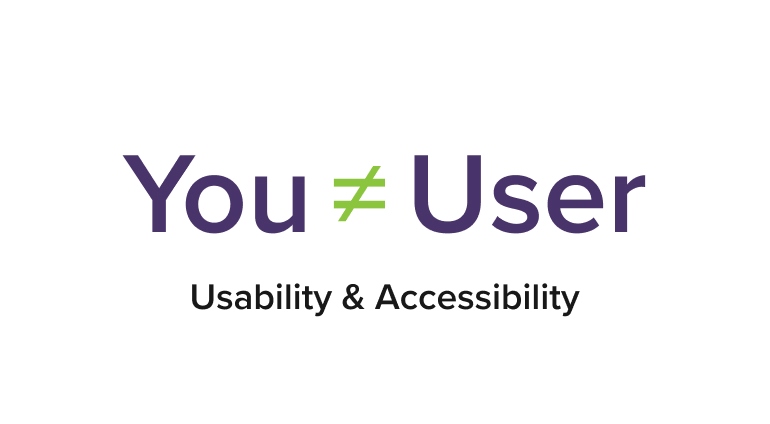5 years ago I attended a course run by NN/g, specialising in UX research. This course was a turning point in my personal development and for the agencies production processes. One of the main learnings that has stuck in my mind is, 'You are not equal to the user'. What does this mean and does it hold true today?
Jakob Nielsen (the first N in NN/g) wrote the rule book on UX and his theories are still relevant after 30 years. Back then he referred to the fact that users are not designers and designers are not users, simplifying this to 'You ≠ user'. Jakob Nielsen focuses on observing users, accessibility for digital inclusion is also a key part to this message.
Usability
We are not the users
Even if we’re designing a tool to run a digital agency, the project team knows much more than the customers. Anyone on the project team knows too much about their own product and is likely to have higher computer intelligence than the average user. If the project team decides where everything is then of course it’s easy for them to use! Our research studies have shown that real users can get lost for minutes on what we perceived to be a simple task.
The users are not us
We cannot speak to users and ask them how our website or application should look or work, it’s not their profession to know this. We must observe and speak to users about the tasks they’re trying to complete. Then it’s up to us as the project team to interpret user feedback and decide what's needed. There are many different research methods we can use to do this, see a few examples below:
- Usability testing
- Surveys
- Google Analytics
- Heatmaps
- Focus groups
- User interviews
Accessibility
How can we ensure our content is universally accessible once we have a usable solution? That’s where accessibility best practices come in. The World Wide Web Consortium (W3C) have a great explanation that sums up what accessibility is:
Accessibility is essential for developers and organisations that want to create high quality websites and web tools, and not exclude people from using their products and services.
We follow a set of principles published by W3C called the Web Content Accessibility Guidelines (WCAG). WCAG first published the guidelines over 20 years ago in 1999. Version 2.0 came out in 2008 and that stood the test of time until version 2.1 in 2018. Version 2.2 is planned for 2023. We’re keeping a close eye on the release date!
The 4 main principles
There are 4 main accessibility principles in WCAG that challenge the need to think about the different ways that people interact with content.
1. Perceivable
Ensures that users can easily see the content or have alternatives available if they can’t. This includes having high enough colour contrast ratios and making the content easy to understand for screen readers by not relying solely on visual formatting e.g. alternate text for images and captions on videos.
2. Operable
The interface must be easily navigable and give users enough time to make decisions. Many users cannot use a mouse and rely on keyboard functions to access content. By using colour indicators and keyboard navigable elements we can make interfaces that are easier to use. Links should also be well labelled so users understand where they are going.
3. Understandable
Text, including the navigation, should be easy to understand to reduce the cognitive load on users. Input assistance for interactive features such as forms should avoid and correct any mistakes.
4. Robust
This is the most technical principle and ensures that a wide variety of assistive technologies can interpret the code. An example of this would be screen magnifier software used to enlarge part of a screen for users with partial sign impairment.
In summary
Anyone who is part of the process to evolve or create new web technologies needs to understand the fundamental fact that they are not equal to the user. By combining UX research methods with accessibility principles we can publish empathetic work, inclusive for everyone.





